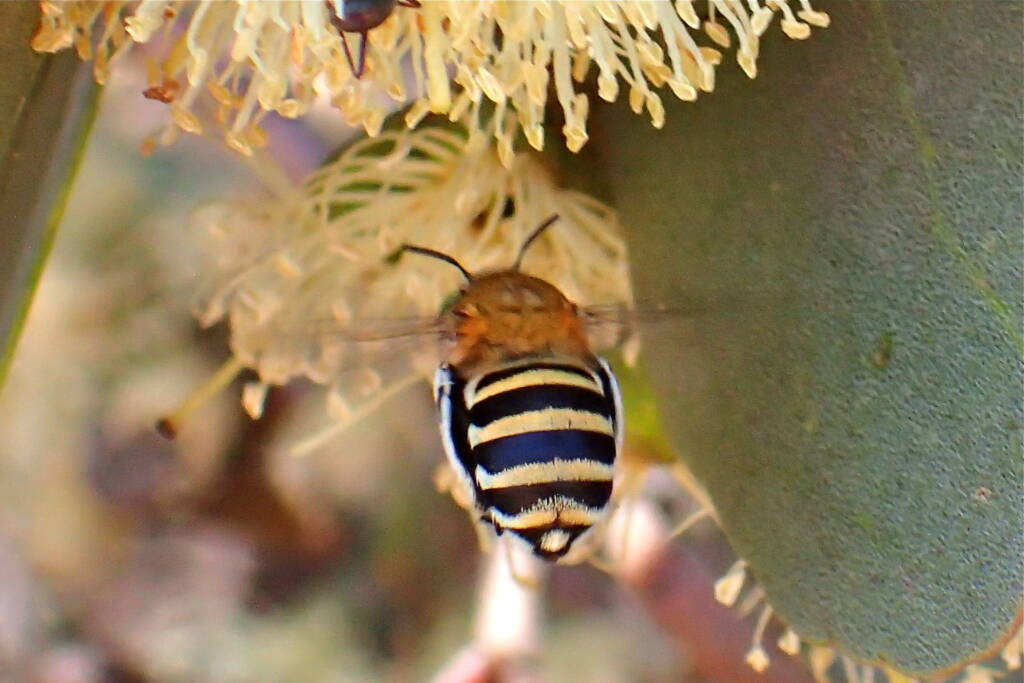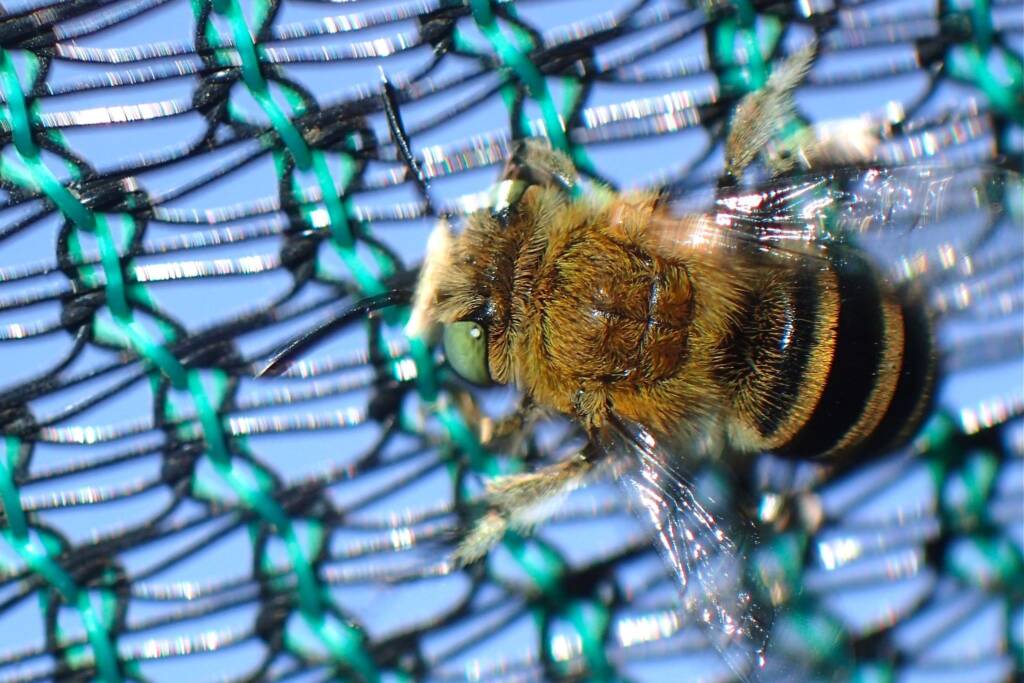Author Gary Taylor ◦
Five reasons why I prefer the name Amegilla to “Blue banded bee” 😀
They’re not all blue, actually, most aren’t… white, yellow, pale green, never a frown with golden brown (‘cept the only one I’ve ever seen wasn’t on a flower but caught under some shade cloth… 😄), and a heap of variations and mixes in between.
But one of the things I love about this page (apart from the amazing amount I’ve learnt) is there is no “science snobbery”, you won’t be chastised for using “common names”…
We all started somewhere. I was fortunate enough to have a superhero Dad who knew everything about nature (what I didn’t know was he didn’t actually always know the real name and often called things what they were called in the 1940’s…) and I still think of Leafcutters, Megachile (Eutricharaea) as AKA (thanks Dad) “circle bees“.😀

And the arguments you may find on other pages (I’ve been in a few, just part of the reason I’m not on them anymore… 😆), that kids know T. rex and other dinosaurs so Latin bee names should be easy, although somewhat true, can be a bit scary, a bit too close to the too hard basket for a lot of us, we’re keen to learn but hey steady on…
The example I used in said arguments was, true story, at a mates place I’d spotted a little “reed bee” on a Tamarisk flower and my mate asked what I was photographing…
Now I swear, the moment I said “Exoneura” his eyes faded out, he was dropping anchor on his boat just out of reach of the breakers on African Reef 30 mile south of Gero… I reckon by the time I’d told him it was in the subfamily Xylocopinae of the major family Apidae he’d have hooked a Dhuey and wouldn’t have heard a word I said 😆 so instead I said, “This is the little native bee they call the Reed bee (not a lot of reeds in the harsh midwest) ‘cos it makes it’s nest in hollow sticks like Lantana…”
Instantly the eyes came back, “Are they? I wonder if that’s what’s I’ve seen by my back door… I just thought they were weird looking flies… I’ll have to have a closer look…” And so the interest begins… 🙂
Now I love the Latin names, chrysopya “goldish rump”, pulcherimus “the most beautiful”, aurifrons (golden, different from chryso, but from Aurum literally meaning gold and why the chemical symbol for gold is Au) and frons meaning front, or brow… yeah ‘cos that’s what stands out about M. aurifrons, it’s the gold fringe, not the bright red bloody eyes… 😆 But where do you begin?
Well for me the first time I photographed a “circle bee” (M. Eutricharaea) it was by a gravel track off a dirt road in Midwest WA farming country, easy… it’s a Ute rich area… 😀👍
Footnote & References
- Five reasons why I prefer the name Amegilla, by Gary Taylor, 28 November 2021, Bee Aware of Your Native Bees (Australia), Facebook
- Amegilla Bees — Blue-banded Bees, Ausemade, https://ausemade.com.au/flora-fauna/fauna/insects/bees/amegilla-sp/




